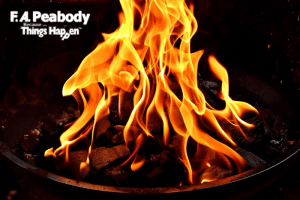Fall is a great time for campfires and backyard bonfires. Here’s how to stay safe (and avoid insurance claims) while you roast your marshmallows.

Fall is a great time for campfires
Contain it.
Establish a safe zone for your fire that prevents it from spreading. Create a ring of rocks on the outside of the bonfire area. Clear away any grass and leaves around the bonfire, creating a 10-foot circle of dirt around the fire. To further establish this dirt-only zone, dig a hole two feet across and six inches deep for your bonfire, then pile dirt around this pit.
Extinguish it.
Never leave a fire unattended. When the bonfire party is over, make sure the fire has completely put out. To ensure it is extinguished, douse the fire with water, then stir the embers to make sure everything gets wet. Scrape any partially burned logs to remove hot embers, then mix the ashes and embers with some dirt. Before you leave the area, everything should be cool to the touch, including the ring of rocks.
Plan it.
Before you light a bonfire, consider the environment. Check the National Weather Service for Fire Weather Warnings. If there is a Red Flag Warning, consider postponing your bonfire to another day. Other conditions to watch for are dry air (low humidity, which increases the risk of wildfires) and high winds, which can quickly blow embers and ashes onto flammable objects.
Prevent it.
Whether you use a portable pit or build a stone ring in your yard, make sure the bonfire is situated at a safe distance from your home. Keep in mind that embers can travel a significant distance from the source. Before you light the fire, take the necessary precautions so you remain safe and won’t have to worry about an insurance issue resulting from your bonfire.
Fall is a great time for campfires and bonfires, so enjoy the season by practicing safety.
